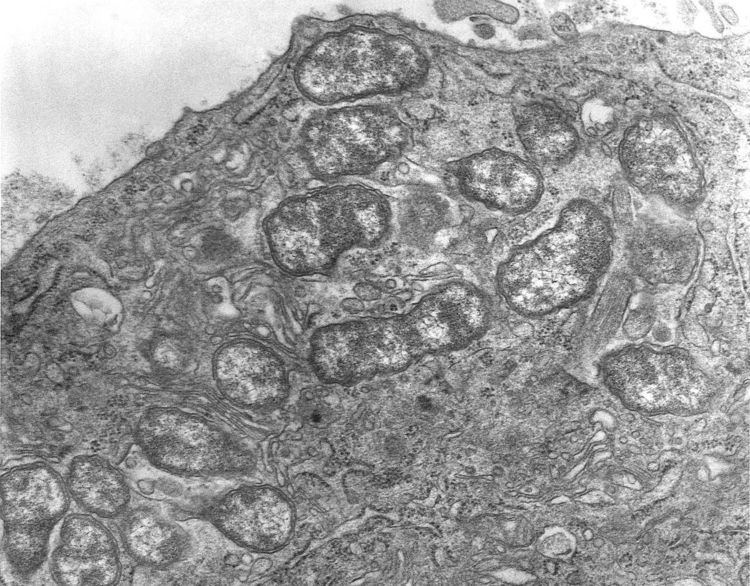Higher classification Orientia | Phylum Proteobacteria Scientific name Orientia tsutsugamushi Rank Species | |
 | ||
Similar Orientia, Bacteria, Leptotrombidium, Rickettsia, Berry bugs | ||
Medical vocabulary what does orientia tsutsugamushi mean
Orientia tsutsugamushi (from Japanese tsutsuga "illness" and mushi "insect") is the causative organism of scrub typhus, and the natural vector and reservoir is probably trombiculid mites (genus Leptotrombidium). The organism is an obligate intracellular pathogen, which needs to infect eukaryotic cells in order to multiply. The envelope is similar to that of Gram negative bacteria, but it is not easily stained with Gram stain and the Gimenez stain is preferred. There are a large number of serotypes described: these include Karp (which accounts for approximately 50% of all infections), Gilliam (25%), Kato (less than 10%), and Kawasaki, but there exists enormous variability, with eight serotypes being reported in a single field in Malaysia, and many more serotypes continue to be reported. Genetic methods have revealed even greater complexity than had been previously described (for example, Gilliam is further divided into Gilliam and JG types). Infection with one serotype does not confer immunity to other serotypes (no cross immunity). Repeated infection in the same individual is therefore possible, and this complicates vaccine design.
Contents
- Medical vocabulary what does orientia tsutsugamushi mean
- Microbiology
- Antimicrobial therapy
- Vaccine
- References
Microbiology
The bacterium was initially categorised in the genus Rickettsia, but is now classed in a separate genus, Orientia, which it shares with the recently described species Orientia chuto.
It is 0.5 µm wide and 1.2 to 3.0 µm long, and is an obligatory intracellular organism that can only be cultured in cell monolayers. The organism is highly virulent and should only be handled in a laboratory with biosafety level 3 facilities.
Antimicrobial therapy
O. tsutsugamushi is sensitive in vitro to doxycycline, rifampicin and azithromycin. It is innately resistant to all β-lactam antibiotics (for example, penicillin) because it lacks a classical peptidoglycan cell wall. Aminoglycosides (for example, gentamicin) are also ineffective in human infection because the organism is intracellular, and aminoglycosides do not penetrate intracellularly.
Vaccine
There are currently no licensed scrub typhus vaccines available. It is now known that there is enormous antigenic variation in Orientia tsutsugamushi strains,and immunity to one strain does not confer immunity to another. Any scrub typhus vaccine should give protection to all the strains present locally, in order to give an acceptable level of protection. A vaccine developed for one locality may not be protective in another locality, because of antigenic variation. This complexity continues to hamper efforts to produce a viable vaccine.
